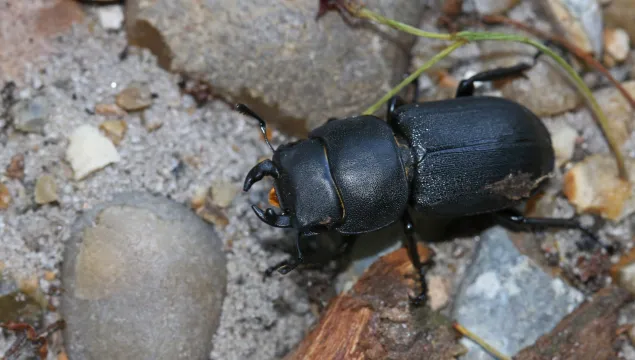
Lesser stag beetle
The lesser stag beetle may be smaller than its famous cousin, but it is still a large beetle with large jaws. It can be seen in woods, parks and hedgerows during summer, and depends on dead wood.

The lesser stag beetle may be smaller than its famous cousin, but it is still a large beetle with large jaws. It can be seen in woods, parks and hedgerows during summer, and depends on dead wood.
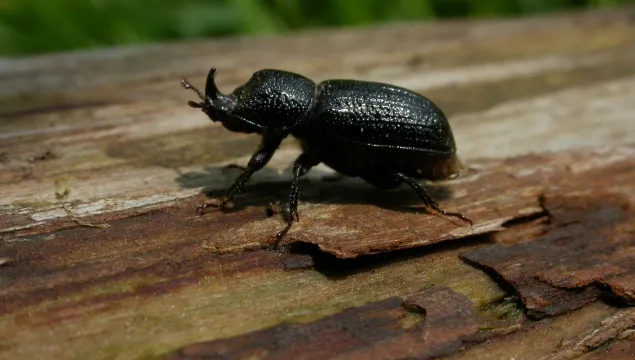
The rhinoceros beetle lives up to its name by sporting a distinctive 'horn' on the males' head. This glossy, blue-black beetle can be found in woods, parks and hedgerows, and depends on dead wood.
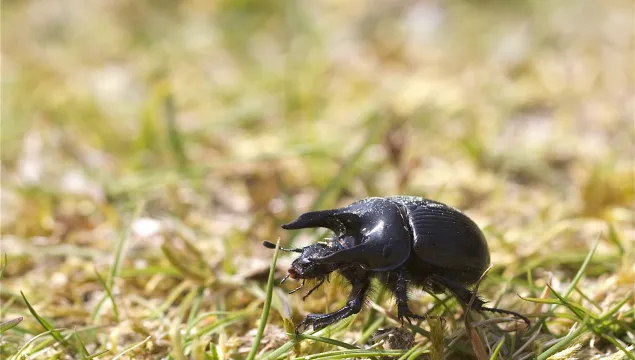
So-named for its three bull-like horns, the Minotaur beetle is a large dung beetle found on grassland and heathland from the autumn. Adults drag dung back to their nests for their larvae to feed on.
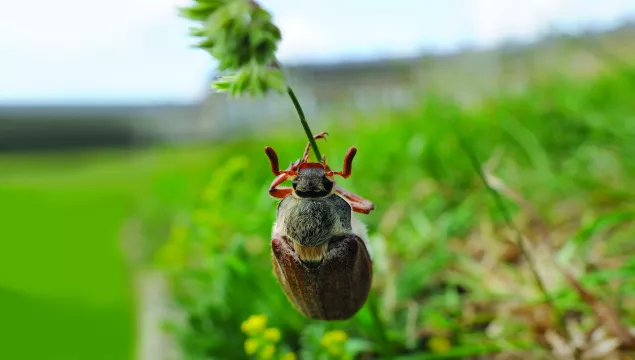
This large, brown beetle can be seen swarming around streetlights in spring. They live underground as larvae for years and emerge as adults often in large numbers. Listen for their characteristic buzzing sound.
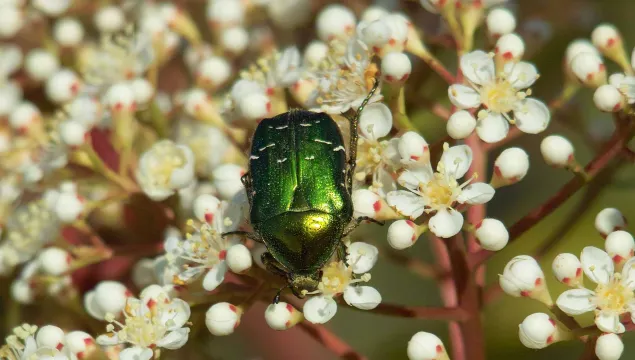
The rose chafer can be spotted on garden flowers, as well as in grassland, woodland edges and scrub.
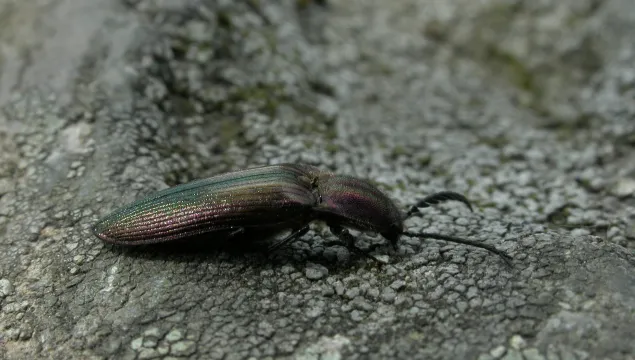
The Coppery click beetle is a large, coppery-purple beetle with straw-brown wing cases. It can be found on grassland and farmland, and its larvae are known to feed on roots and damage crops.
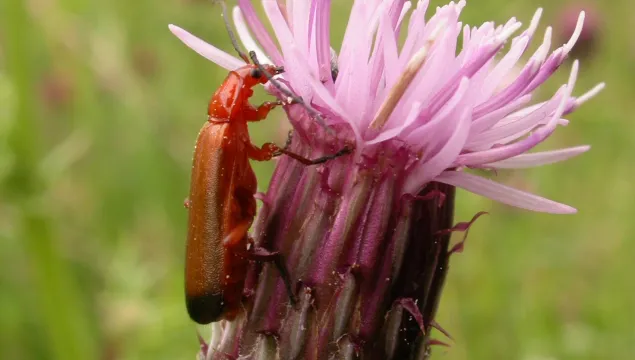
The common red soldier beetle is also known as the 'bloodsucker' for its striking red appearance, but it is harmless. It is a beneficial garden insect as the adults eat aphids, and the larvae eat other pests.
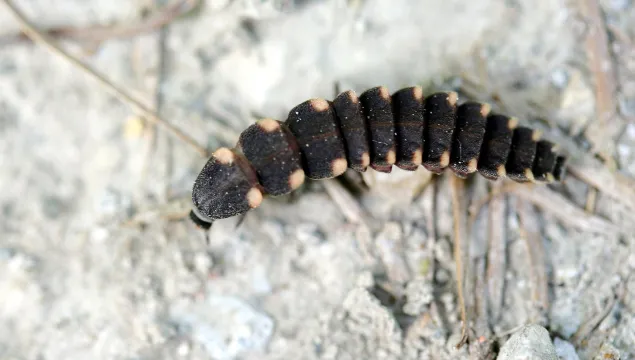
The glow-worm is not actually a worm, but a beetle. Males look like typical beetles, but the nightly glow of a female is unmistakeable - lighting up to attract a mate in the darkness of their grassland habitats. Look for the adults in summer.
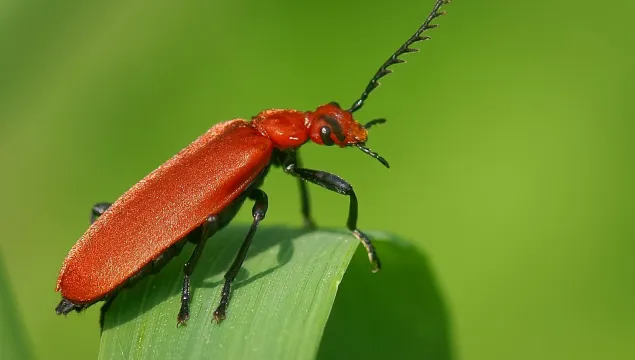
A bright red beetle, with black legs and knobbly antennae, the red-headed cardinal beetle lives up to its name. Look for it in woodland, along hedgerows and in parks and gardens over summer.
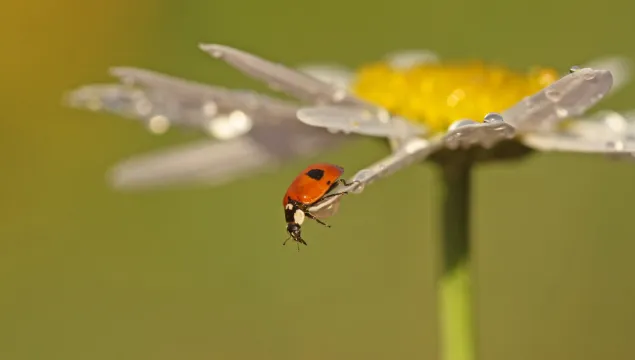
Our most common ladybird, the black-on-red markings of the 2-spot Ladybird are familiar to many of us. Ladybirds are beneficial insects, managing garden pests - encourage them by putting up a bug box.
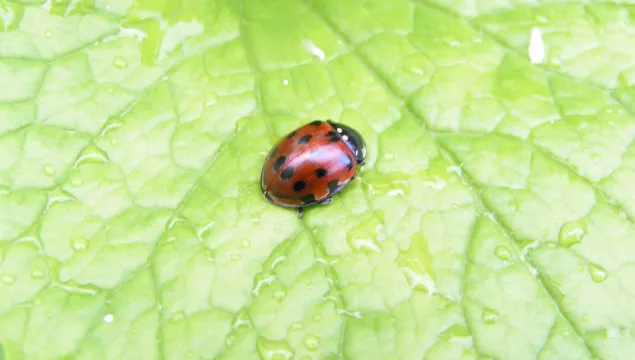
The large eyed ladybird is unmistakeable: it is our only ladybird with yellow rings around its black spots. Ladybirds are beneficial insects, managing garden pests - encourage them by putting up a bug box.
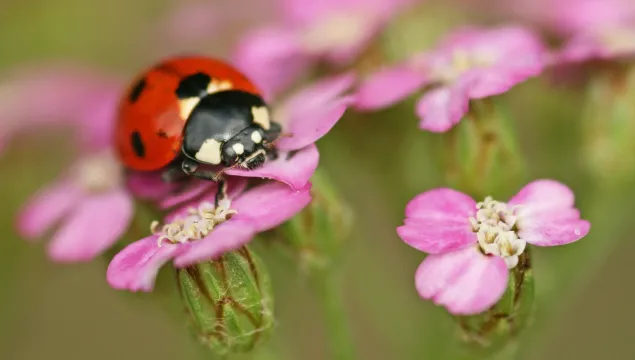
One of our most common ladybirds, the black-on-red markings of the 7-spot ladybird are very familiar. Ladybirds are a gardeners best friend as they eat insects that love to nibble on garden plants! You can encourage them into your garden by putting up a bug box.